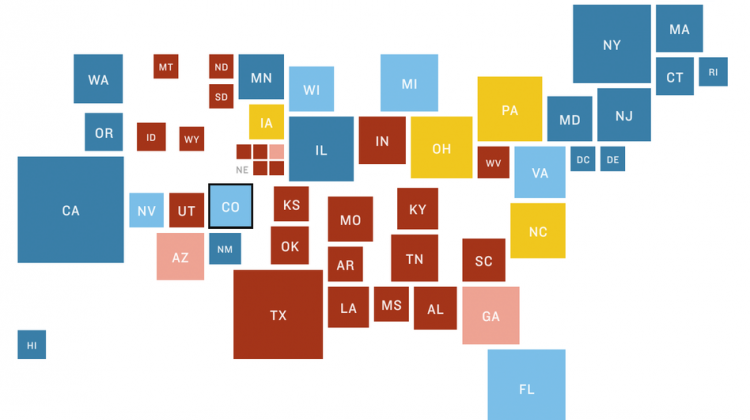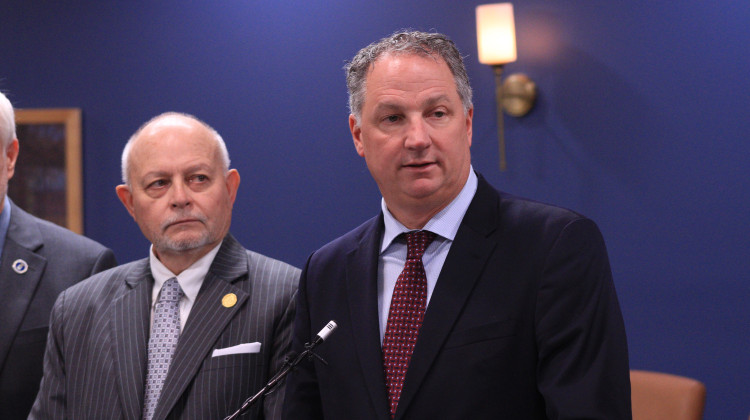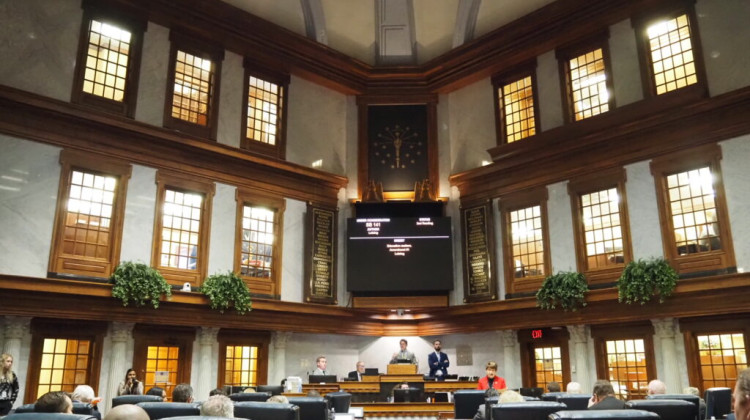This past month has seen lots of news events with potential consequences to politics — controversial police shootings in Minnesota and Baton Rouge, La., followed by the killing of police officers in Dallas and Baton Rouge. Plus, there was the horrific incident in Nice, France, that saw scores killed when a man drove a truck through a crowd watching fireworks on Bastille Day.
That's in addition to FBI Director James Comey's thwacking of Hillary Clinton for her use of a private email server. While Comey recommended no criminal charges against her, it did not help her already tarnished image. Still, Republican Donald Trump seemed incapable of capitalizing on any of it — tweeting an image of a six-pointed star on the day Clinton was interviewed by the FBI, and then, at an event after the FBI announcement, praising Saddam Hussein for his ability to kill terrorists; and botching the rollout of his vice presidential pick, Mike Pence.
Trump hopes to capture the moment this week, at the GOP convention, which kicks off Monday with a focus on law and order. The theme of the first night, for example, is "Make America Safe Again." (Candidates historically can get a 5- to 7-point bounce out of conventions.)
It's not clear how any of this will play out, and politics feels in flux right now. Any predictions of exactly what's going to be happen should be taken with hefty grains of salt. Let's see where things stand a few weeks after both parties' conventions when attitudes settle in. (Democrats hold their convention next week in Philadelphia.)
Going into the conventions, however, Clinton maintains an electoral-map advantage. Here's why: While national polling has shown a tightened race (Clinton's lead gone from 7 to 3 in the RealClearPolitics average from a month ago), in the states, there's one clear change — Colorado has moved more toward Clinton. A slew of polls in the state in the past couple of weeks have all shown Clinton with sizable leads (NBC/WSJ/Marist +8, Monmouth +13, Fox +10). Plus, the state party has struggled there, and it's unclear if the state or national parties will invest there for the Senate race.
So we've moved Colorado from Tossup to Lean D. That expands Clinton's electoral-vote advantage to 288 to 191. (270 is what's needed to be president.) According to our map, Clinton would need to win just the states leaning her direction to win, and could lose all of the current tossups — Iowa, North Carolina, Ohio, Pennsylvania — and still have some cushion. Notice that includes Ohio, where the Republican convention is, and neighboring Pennsylvania, which Democrats have carried since 1992.
We made no other changes, but not without discussion. Two question marks we will be watching in the next month (in addition to how the police shootings and terrorism-related incidents affect voter sentiment) — Nevada and Florida. Because of fundamentals — demography and voting history — both are currently Lean D, but could easily move to Tossup.
Nevada is notoriously difficult to poll; there haven't been many so far, and the two done in the past month are conflicting. Still, the state's Hispanic population and Democratic infrastructure give Clinton the edge. We'll be watching for any shifts through reporting, surveys or otherwise.
In Florida, Clinton had a wider lead last month, and the polling average has shrunk. Still, a good poll — NBC/WSJ/Marist — showed Clinton up 7. (A Quinnipiac poll had Trump up 3.) Let's see how things even out in the next month. For now, the state's heavy Latino population still gives Clinton the edge.
Overall 288-191
Safe D (164): California (55), Connecticut (7), Delaware (3), Hawaii (4), Illinois (20), Maine* (3), Maryland (10), Massachusetts (11), New York (29), Rhode Island (4), Vermont (3), Washington, D.C. (3), Washington state (12)
Likely D (37): Maine (1), Minnesota (10), New Jersey (14), New Mexico (5), Oregon (7)
Lean D (87): Colorado (9), Florida (29), Michigan (16), Nevada (6), New Hampshire (4), Virginia (13), Wisconsin (10)
Pure Tossup (59): Iowa (6), North Carolina (15), Ohio (18), Pennsylvania (20)
Lean R (28): Arizona (11), Georgia (16), Nebraska* (1)
Likely R (27): Indiana (11), Missouri (10), Utah (6)
Safe R (136): Alabama (9), Alaska (3), Arkansas (8), Idaho (4), Kansas (6), Kentucky (8), Louisiana (8), Mississippi (6), Montana (3), Nebraska (5), North Dakota (3), Oklahoma (7), South Carolina (9), South Dakota (3), Tennessee (11), Texas (38), West Virginia (5), Wyoming (3)
9(MDEwMDc1MzM3MDEzNDczOTA0MDc1MzViMQ001))
 DONATE
DONATE








 Support WFYI. We can't do it without you.
Support WFYI. We can't do it without you.